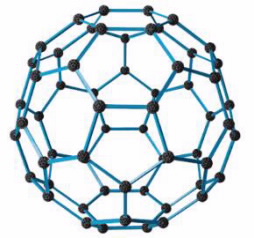FOR IMMEDIATE RELEASE | October 04, 2010
Houston kids invited to learn about nanotechnology at Rice University celebration Oct. 11
HOUSTON, Oct. 4, 2010 — Kids and families can learn more about the fascinating world of “small science,” or nanotechnology, through hands-on, age-appropriate activities, science demonstrations and a tour of the very laboratories where this historic research was originated — Rice University.
Kids’ activities will be offered as part of the 25th Anniversary
Bucky ‘Ball’ Celebration, a public open house to honor Nobel Laureates Robert Curl, Ph.D., Harry Kroto, Ph.D., and Richard Smalley, Ph.D., the scientists who discovered fullerenes — also called buckyballs — the form of carbon that makes nanotechnology possible.
Nanotechnology is the field of science that studies materials at the molecular or atomic scale, or about 1/50,000 the width of a human hair. Scientists expect the futuristic field to produce new materials that will revolutionize medicine, electronics, energy production, and other areas. .
Concurrent with the open house, the American Chemical Society will honor the work of Curl, Kroto, and Smalley (posthumously) during a special presentation designating the discovery of fullerenes as a National Historic Chemical Landmark.
- What: Bucky ‘Ball’ Celebration. A public open house with games, chemistry demos, festivities, displays and laboratory tours. Food and drink will also be served.
- Where: Rice University, Space Science Building, The Smalley Institute, Houston, Texas.
- When: Monday, Oct. 11, 2010:
Public open house and kids’ activities, 5:30 – 7:30 p.m.
National Historic Chemical Landmark Presentation, 6:15 – 6:45 p.m.
- Who: Kids, families, and others interested in nanotechnology are encouraged to attend.
Important Note: Registration and a nominal fee for food are required. To register: http://buckyball.smalley.rice.edu/registration or email: nanoevent@rice.edu.
The Richard E. Smalley Institute for Nanoscale Science and Technology at Rice University began in the early 1990’s as the Center for Nanoscale Science and Technology. In 2005, the Institute was renamed in Smalley’s honor. The Institute’s vision is to “solve humanity’s most pressing problems – energy, water, environment, disease, education – through the application of nanotechnology.” The Smalley Institute has over 150 faculty members spread over 21 departments with over 500 students researching nanotechnology. Dr. Wade Adams is the Institute’s director. The Institute is located at: 6100 Main Street, Space Science Building, Houston. For information about the Institute: http://smalley.rice.edu/.
The American Chemical Society established the Chemical Landmarks program in 1992 to recognize seminal historic events in chemistry and to increase awareness of the contributions of chemistry to society. Other landmarks named through this prestigious program have included the invention of Bakelite®, the discovery of penicillin, the development of Tide laundry detergent and the work of historical figures, including Joseph Priestley, Antoine Lavoisier and George Washington Carver, among others. For more on the Landmarks program, please visit www.acs.org/landmarks.
###


